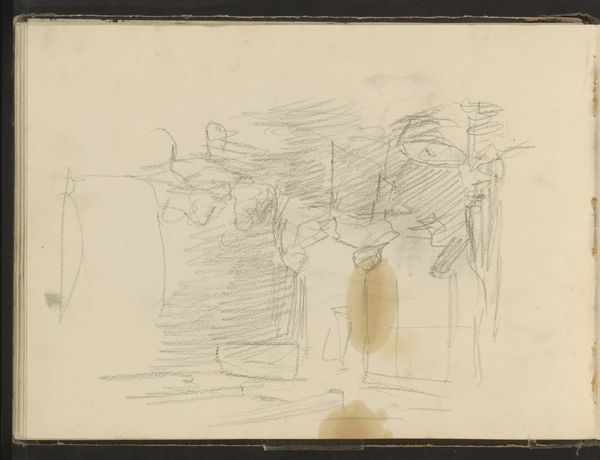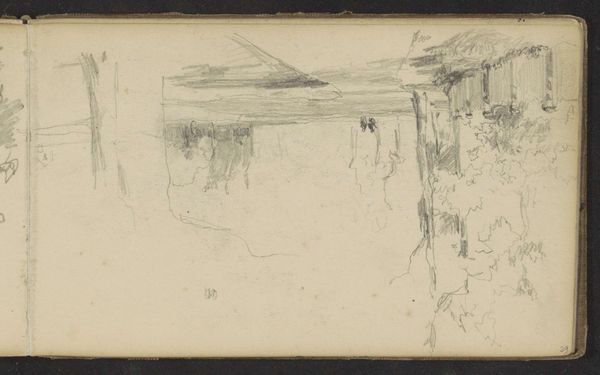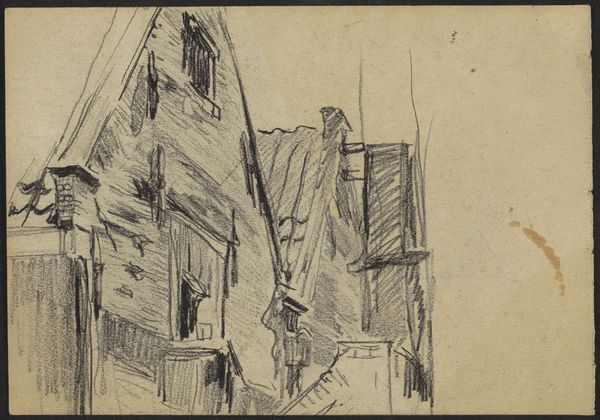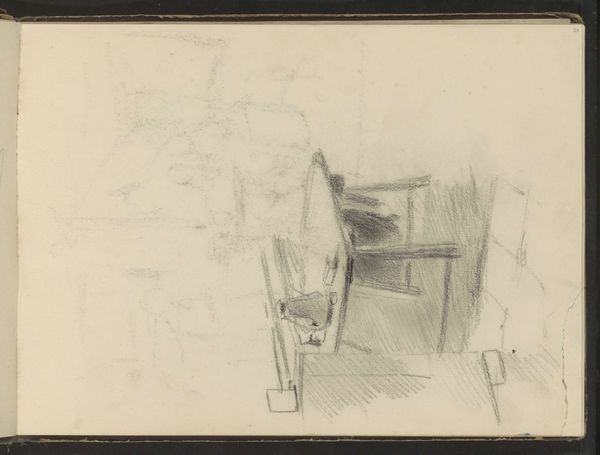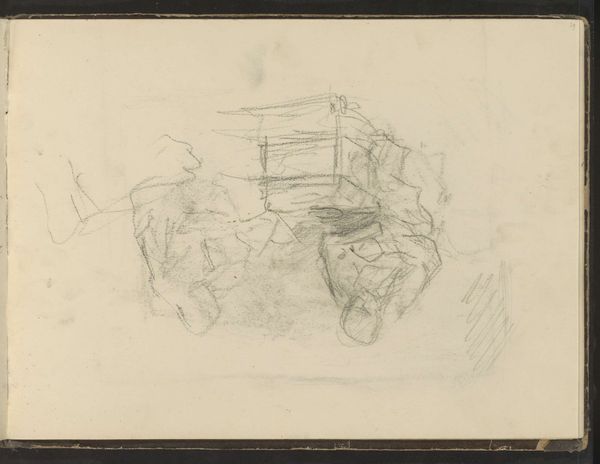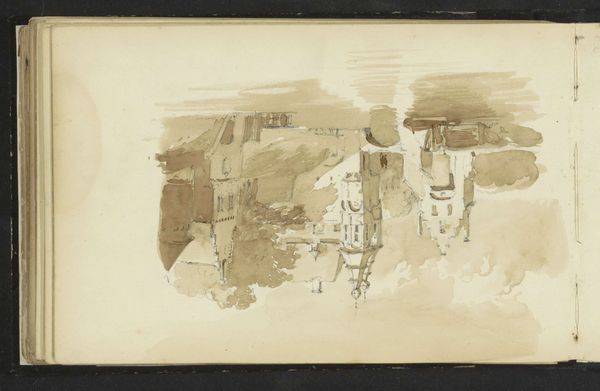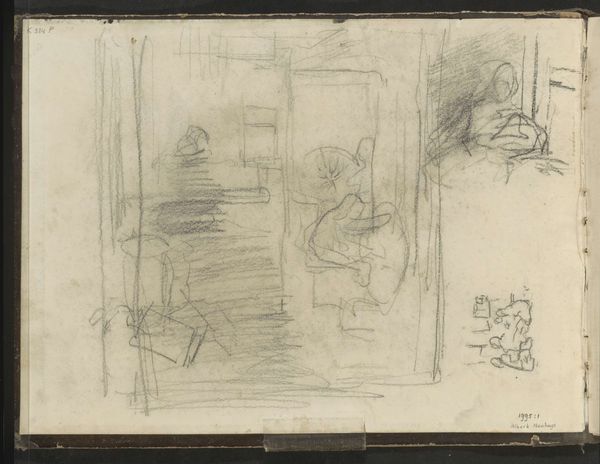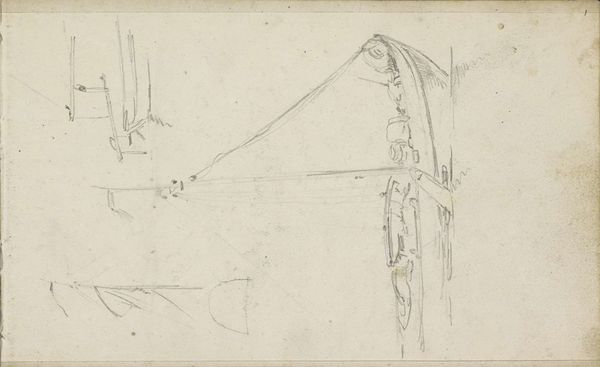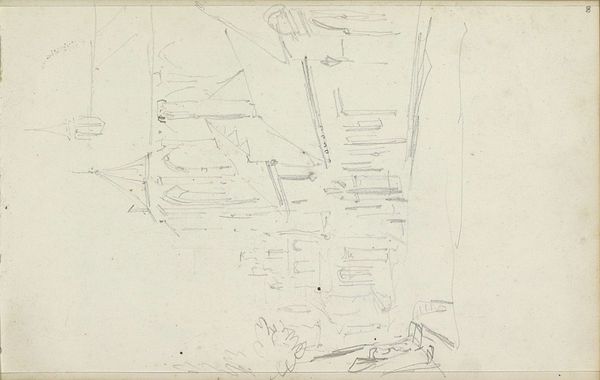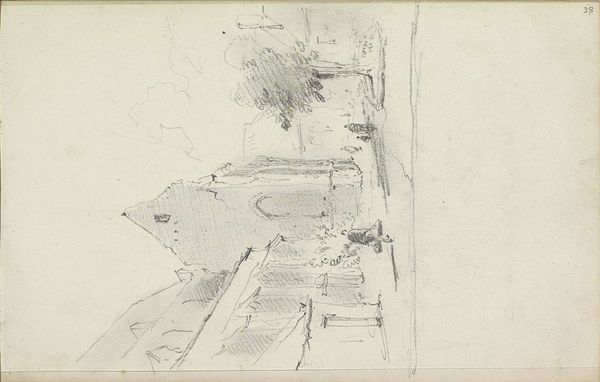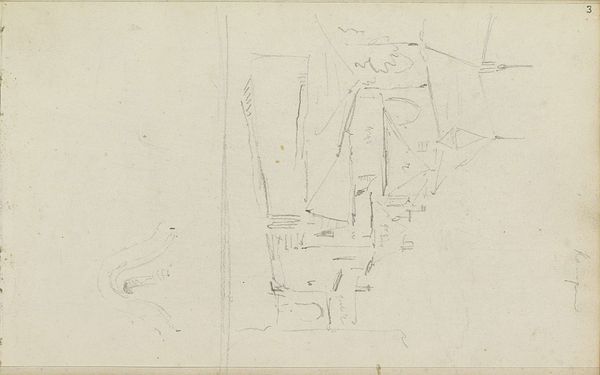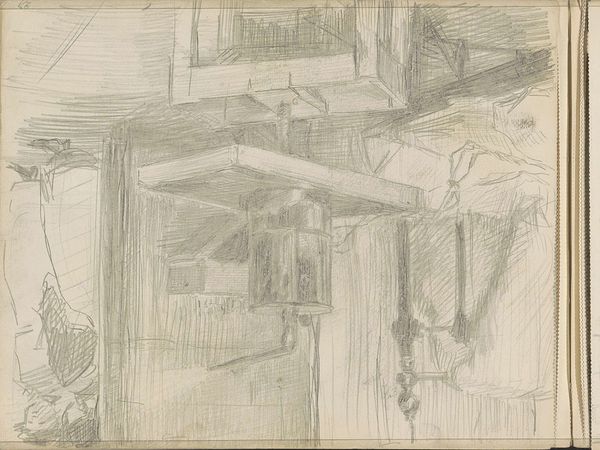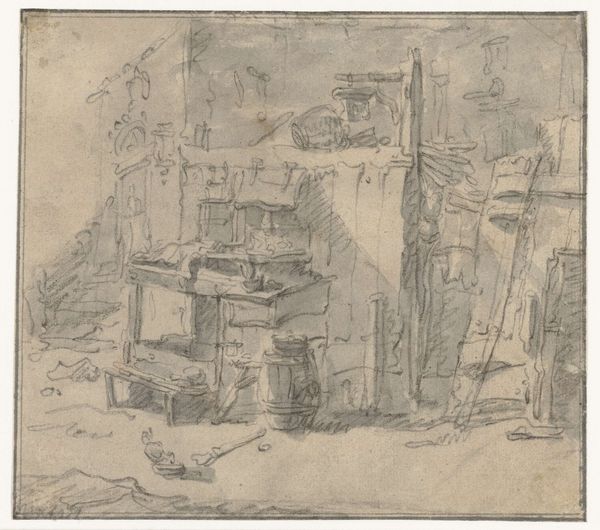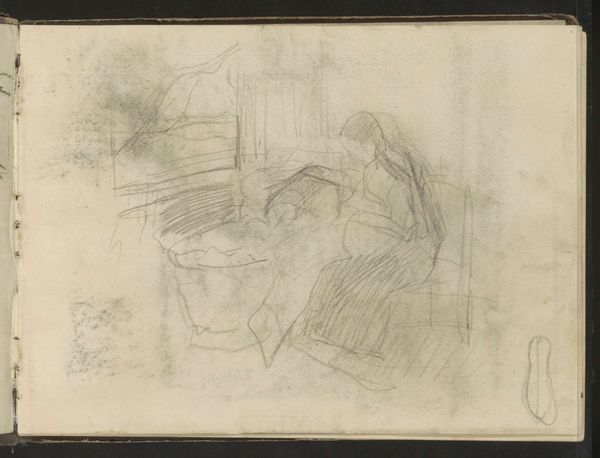
drawing, pencil
#
drawing
#
landscape
#
pencil
#
street
#
realism
Dimensions: height 225 mm, width 295 mm
Copyright: Rijks Museum: Open Domain
Editor: So this is Willem Cornelis Rip's "Street, a Cart and a Woman with a Basket in Klausen in Tyrol", created in 1874 using pencil. It feels unfinished, almost like a fleeting memory captured on paper. What do you see in this piece? Curator: The unfinished quality is quite interesting, isn’t it? It highlights the immediacy of the artist's experience. Beyond the literal depiction of a street scene, I am drawn to how Rip uses these seemingly mundane objects to represent larger ideas about journey and societal structures. Klausen, Tyrol – do you see it as a crossroad, literally or metaphorically? Editor: I do see the street as a path of sorts, guiding the eye deeper into the landscape, maybe even suggesting a life journey? The woman carrying the basket-- is she important? Curator: Precisely! And note the woman. While small in scale, she becomes a focal point. In older works, burdens were sometimes a symbolic signifier. Her basket becomes an emblem of daily life, her position echoing those that reflect endurance and human scale within a vast landscape. This imagery evokes centuries of such depictions. Editor: So the street and the woman, even rendered simply, carry symbolic weight through their history in art? Is that right? Curator: Exactly. Artists build on these historical layers of visual representation. And Rip would know this; ask yourself why the artist choose to document it as a sketch instead of as a painting, how do you think it affects its symbolic purpose? Editor: I hadn’t thought of that. I suppose the sketch format lends a feeling of spontaneity, almost like a fleeting glimpse, versus something grand and monumental. Curator: Indeed. Consider how the drawing speaks volumes about capturing a moment in time and the enduring motifs within the human experience. Editor: I've never considered everyday scenes possessing this level of depth; I realize now the value in looking closer! Curator: Me neither. Analyzing artwork together reminds me the importance of continuity within art history and cultural symbolism that binds human existence.
Comments
No comments
Be the first to comment and join the conversation on the ultimate creative platform.
